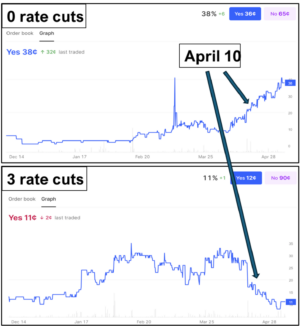“This time it’s different.” These can be the four most dangerous words that any investor can utter.
The phrase can trip up the unwary in myriad ways. “These valuations seem unsustainable,” one might contend. Don’t worry, this time it’s different. “This technology has failed every time it’s been tried before.” No problem, this time it’s different. Any of us can attempt to justify all sorts of wild schemes or nosebleed prices on the idea that they aren’t subject to the norms that have applied before.
But here’s the rub—sometimes it really is different. Major turning points occur when there is a secular change in the economy’s fortunes or a notable development that affects a company’s long-term prospects.
Think back to early 2020. The global Covid-19 outbreak was indeed something different, and markets fell precipitously. The massive monetary and fiscal stimuli that were offered in the crisis’s wake were something different as well, causing asset prices to leap. Enormous opportunities were available to those investors who astutely recognized the seismic shifts.
If we acknowledge that monetary and fiscal stimuli were key factors in the great bull run of the past 18 months, how do we reckon with the possibility that both may be coming to an end? Federal Reserve Chairman Jerome Powell recently acknowledged that the central bank would be tapering its $120 billion monthly bond purchases “soon” and would likely end them completely in a matter of months.
The Fed may be taking its foot off the monetary gas pedal, but it won’t yet be tapping the brakes by raising interest rates. It isn’t clear how markets will react to a less expansive monetary policy, even though one is likely to be upon us soon. Furthermore, investors appear uncomfortable with a Congress whose lack of progress on the debt ceiling, budget reconciliation, and infrastructure bills have turned fiscal policy from an economic tailwind to a potential headwind. And, after a long absence, inflation seems to be rearing its ugly head.
It should thus be no surprise, then, that volatility has returned to major U.S. indexes. Uncertainty begets volatility. Volatility ebbed when it was clear that market-friendly policies were in place and pushed higher after the Fed’s stance began to morph.
Each of the past three weeks has featured at least two days with over 1% changes in the S&P 500 index and at least one 2% decline in the Nasdaq 100. When the S&P hit an all-time high on Sept. 2, its 10-day historical volatility was 8.09. On Oct. 5, just over a month later and after four sequential 1% up and down days, that measure had nearly doubled to 15.76.
While implied volatilities on S&P 500 options have risen across the board, we recently noticed a significant change in the relative valuation of out-of-the-money options, or “skew.” Early this week, implied volatilities had risen most for options that are about 5% below market and barely budged for options that are 10% above market. This tells us that traders are focused on hedging a decline that would signify a normal correction and less eager to speculate on a significant short-term bounce.
Markets in general, and the options market in particular, are telling us that we should be concerned about how events could play out in the coming weeks. Contrarian traders who are risk-tolerant and well-capitalized could attempt to take advantage of the pricing disparity described above by selling put options to finance call-option purchases. But I would also suggest that investors consider whether their risk exposures are appropriate and use options to manage them in the face of a changing monetary policy and fiscal uncertainty.
Quite frankly, this time looks different.
—
Originally Posted on October 7, 2021 – Why ‘Buying the Dip’ May Have Run Its Course
Steve Sosnick is the chief strategist at Interactive Brokers.
Disclosure: Interactive Brokers
Information posted on IBKR Campus that is provided by third-parties does NOT constitute a recommendation that you should contract for the services of that third party. Third-party participants who contribute to IBKR Campus are independent of Interactive Brokers and Interactive Brokers does not make any representations or warranties concerning the services offered, their past or future performance, or the accuracy of the information provided by the third party. Past performance is no guarantee of future results.
This material is from Barron's and is being posted with its permission. The views expressed in this material are solely those of the author and/or Barron's and Interactive Brokers is not endorsing or recommending any investment or trading discussed in the material. This material is not and should not be construed as an offer to buy or sell any security. It should not be construed as research or investment advice or a recommendation to buy, sell or hold any security or commodity. This material does not and is not intended to take into account the particular financial conditions, investment objectives or requirements of individual customers. Before acting on this material, you should consider whether it is suitable for your particular circumstances and, as necessary, seek professional advice.
Disclosure: Margin Trading
Trading on margin is only for sophisticated investors with high risk tolerance. You may lose more than your initial investment. For additional information regarding margin loan rates, see ibkr.com/interest
Disclosure: Options Trading
Options involve risk and are not suitable for all investors. Multiple leg strategies, including spreads, will incur multiple commission charges. For more information read the "Characteristics and Risks of Standardized Options" also known as the options disclosure document (ODD) or visit ibkr.com/occ



























